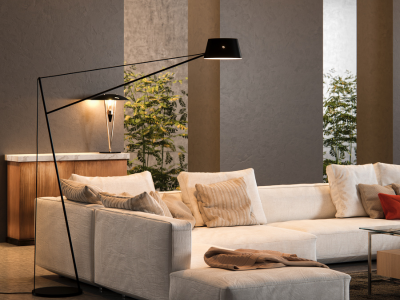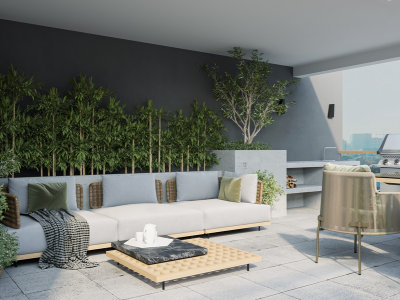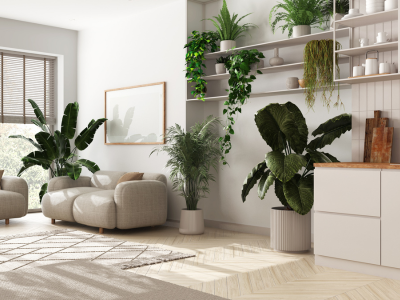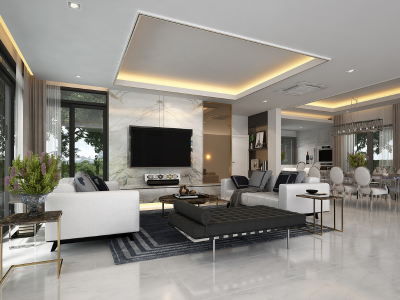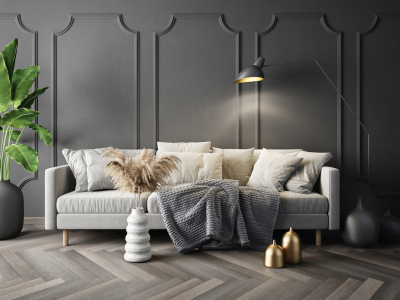
Interior design isn’t just about aesthetics; it’s also about how spaces make us feel. The colors, layouts and furniture choices we make in our homes can significantly impact our mood, emotions and overall well-being. Understanding the psychology behind interior design allows you to create a harmonious environment that promotes relaxation, productivity or creativity, depending on the space's purpose.
In this blog, we’ll explore how different colors and layouts influence mood and provide tips on designing spaces that enhance emotional well-being.
1. The Power of Color: How to Choose the Right Shades
Colors have a powerful effect on our emotions. While some colors can promote calm and relaxation, others can boost energy and stimulate the mind. Here’s a breakdown of how specific colors impact mood and where they are best used in your home:
● Blue: Known for its calming properties, blue is an excellent choice for bedrooms and bathrooms. It evokes feelings of serenity and helps lower stress levels.
● Green: A symbol of nature, green is refreshing and soothing. It works well in living rooms, home offices and kitchens as it promotes relaxation and balance.
● Yellow: A cheerful, energizing color, yellow is perfect for kitchens and dining areas, as it stimulates appetite and encourages social interaction.
● Red: A bold, passionate color that can increase energy levels. Red works well in dining rooms and living rooms but should be used sparingly in bedrooms due to its stimulating effects.
● Gray: A neutral, sophisticated color that creates a sense of calm. It’s a versatile option for any room, providing a perfect backdrop for more vibrant accents.
Pro Tip: Use accent walls to introduce bold colors without overwhelming the space and balance them with neutral tones to create harmony.
2. Room Layouts: Functionality Meets Flow
The layout of a room greatly influences how it feels and functions. Well-designed layouts promote a smooth flow, while cluttered or awkward spaces can cause stress and discomfort. When arranging furniture and decor, consider the natural movement through the space and the primary purpose of the room.
● Open Floor Plans: Open layouts encourage social interaction and make spaces feel more expansive. This type of layout is ideal for living rooms and dining areas, where families and friends gather.
● Zoned Layouts: For larger or multifunctional rooms, consider zoning the space into different areas for specific activities (e.g., a reading nook, a dining space or a home office). Rugs, furniture placement and lighting can help define these areas.
● Flow and Balance: Make sure pathways are clear and that the room feels balanced. Symmetrical furniture arrangements can create a sense of order and calm, while asymmetry adds visual interest.
Pro Tip: Furniture placement should allow for easy movement and a clear line of sight from one area of the room to another.
3. Texture and Material: Creating Comfort
Texture plays a key role in how a space feels. Combining different textures, such as soft fabrics, smooth metals and rough natural materials, adds depth and interest to a room. Textured materials also stimulate the senses and can make a space feel more cozy and inviting.
● Soft Textures: Velvet, wool and cotton create a warm, comforting environment that’s perfect for living rooms and bedrooms.
● Natural Textures: Wood, stone and leather bring an earthy, grounding feel to interiors, helping you connect with nature.
● Smooth Textures: Glass, polished metals and ceramics add a modern, sleek touch to spaces, balancing out softer textures.
Pro Tip: Layer different textures through throw pillows, rugs and upholstery to add dimension and comfort to your design.
4. Lighting: Setting the Mood
Lighting can dramatically alter the atmosphere of a room. While natural light promotes happiness and energy, artificial lighting is essential for setting specific moods in different areas of your home.
● Natural Light: Maximize natural light by using sheer curtains, large windows or skylights. Natural light enhances mood and makes spaces feel open and airy.
● Ambient Lighting: Soft, overhead lighting creates a general glow in the room. Use warm-toned bulbs to add warmth and relaxation.
● Task Lighting: Task lighting, such as desk lamps or under-cabinet lights is essential for workspaces and kitchens, where focused light is needed.
● Accent Lighting: Use accent lighting, such as wall sconces or floor lamps, to highlight specific areas or decor elements, creating a cozy ambiance.
Pro Tip: Incorporate dimmer switches to adjust the intensity of light according to the time of day and mood.
Conclusion:
Understanding the psychology of interior design allows you to create spaces that not only look good but also feel right. By carefully selecting colors, optimizing layouts and considering textures and lighting, you can design environments that support emotional well-being and enhance the overall ambiance of your home. Whether you’re looking to create a calming retreat or an energetic workspace, these design principles will help you achieve the desired mood.


